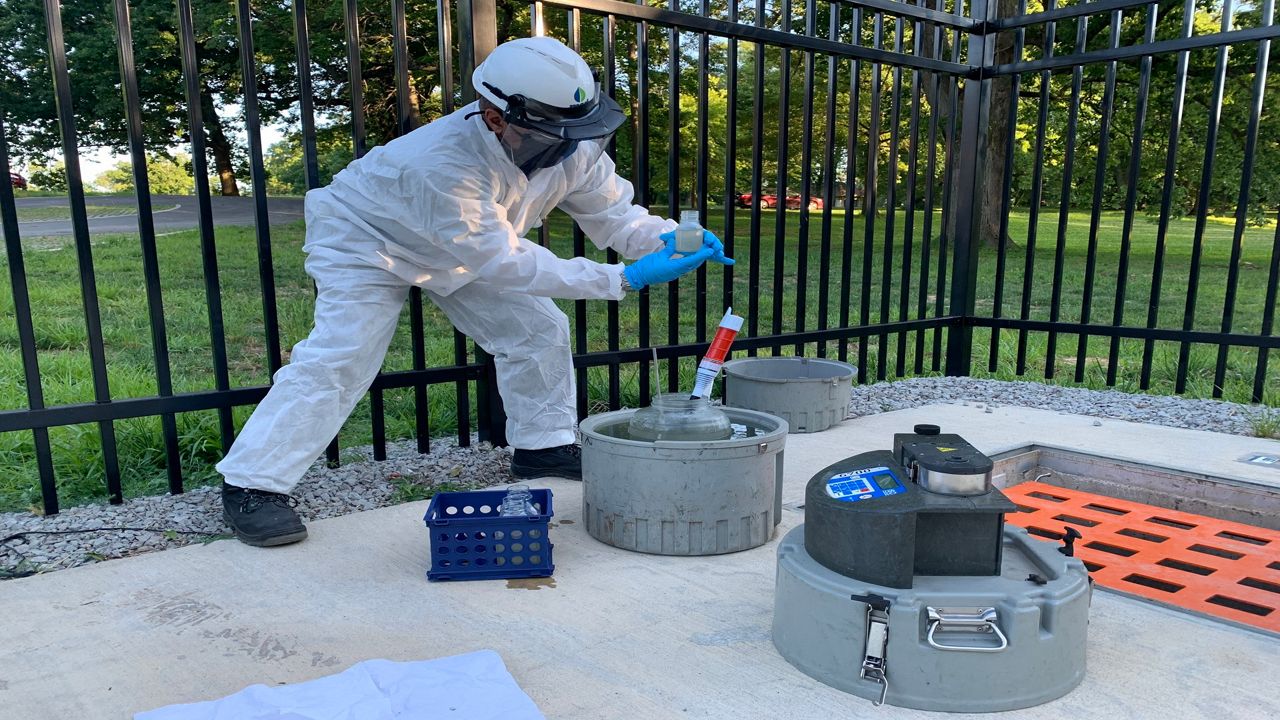LOUISVILLE, Ky. — After weeks of ripping through Louisville, the COVID-19 omicron variant appears to have plateaued in Kentucky’s largest city, according to samples of wastewater taken by researchers at the University of Louisville.
“The wastewater data from this week indicates that we have not yet turned the corner — levels are high and flat,” Dr. Ted Smith, director of UofL’s Center for Healthy Air, Water and Soil, wrote in an email. “The good news is that we are not seeing any further increase in the community as a whole.”
Since last year, Smith and his team have monitored wastewater at more than a dozen sites across Louisville. They can measure both the prevalence of COVID, which is shed in feces, and the variant, thanks to genomic sequencing.
The wastewater results align with other data that suggests a plateau of the current wave of COVID cases in Louisville.
In the week ending Jan. 15, the city reported 16,200 cases. That was down 100 cases from the week prior.
“I’m asked often if I think that we are at our plateau and I hope that is the case,” Sarah Beth Hartlage, Associate Medical Director at the Louisville Metro Department for Public Health, said Tuesday. “We have seen a little bit of leveling off. We’ll need to see that over a few more days or a week or so to be really confident that we’ve hit that plateau.”
Hartlage cautioned that getting to a peak in cases does not mean the city is “out of the woods.”
“We'll still have just as many cases on our way down the backside of the curve as we did on the way up the frontside,” she said. That means that several more weeks of 10,000-plus cases could be coming.
Hospitalizations and deaths also lag cases. That’s why it’s completely expected that the case surge has not been accompanied by an increase in deaths. In fact, the first two weeks of January have seen 14 COVID-19 deaths after more than 60 in December. Hospitalizations, however, are roughly 2.5 times higher than December. That also suggests that many more COVID deaths are coming.
Louisville appears to be following a pattern that has already taken place in some major cities that were among the first to see the arrival of the omicron variant.
New York City saw COVID cases go from a weekly average of roughly 1,200 in mid-November to more than 42,000 in the first week of January. Those numbers have been in a free fall for the past 10 days. Spikes in hospitalizations and deaths are also declining.
“We’ll be at the forefront of the states seeing this long-awaited, much-anticipated decline,” New York Gov. Kathy Hochul said last Friday.
Similarly, Washington, D.C., saw a new spike in COVID cases plateau around New Year’s Day. Those numbers are also on the downturn. Connecticut, Maryland, New Jersey, and the Bay Area are also seeing a decline.



